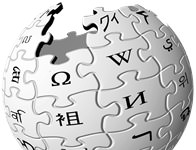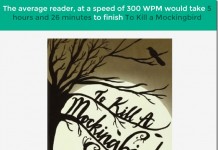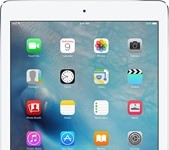So what do TeleBlog readers make of this? The $3,499 BookDrive DIY scanner includes an auto page-flipper and works with Canon digital SLR cameras. With the needed camera included, the price is $5,699. Effective speed appears to be 600 pages an hour. Look over the specs, and consider other factors. Is this a Buy or too iffy? Vendor is Atiz.
Broadening the question, what are the best low-cost scanning solutions with auto page-flippers–and what are the pros and cons of each? (Thanks, Roger!)


































I would say that the price is to high even for 600 pages per hour. You can do that with just a cheap flat bed scanner with a little practice. If you are willing shoot 2 pages at time. And faster with a high speed page scanner. The real cost to these machines is the labor that goes into producing etexts from the output from one of these operations. The question that comes to my mind is just exactly who and what is the market for a machine such as this? Google, the Open Book Project, Bootleg book scanners?
I have 4 flatbed scanners and two page scanners running 8 hours a day, 6 days per week, year round. I couldn’t see a use for one of these until the price gets under $200.
Considering that other planetary scanners start at around $US 10,000, and that part of this scanner (the cameras) can be repurposed, I’d say this is a steal.
I don’t think there is a library, museum or archive in the world that doesn’t have a digitization program today. I am guessing that Atiz is aiming at these sort of programs, at relatively small institutions with a couple of hundred codexes to scan. The main investment in such schemes is labour; which is why you would stress speed.
I have been thinking about a DIY planetary scanner for Project Gutenberg type projects. Since labour is free there, such a scanner could focus less on speed, and more on quality and process. The biggest stumbling blocks for such a scanner would be that a volunteer may not have much money; so I would use even more standard components than Atiz does here.
No automatic page flipper, as that would only add to the cost, and cannot be re-used in other activities. Software is important, as you want to correct for barrel distortion, and you will also want to focus using the computer, rather than the camera. You may need a second computer, to OCR and back up the files while you’re running your scanner. And I would use a single camera, with an arm that can be used to move the camera around.
Unfortunately, though 5+ MP digital cameras can be had for little over 100 euro (and I saw one advertised once for 50), digital cameras with a “webcam function”–that is, digital cameras that can be controlled from the computer–seem to start at 500 US$.
By the way, does anyone know why these automatic bookscanners come draped in black cloth?
David Reed, please tell me how you get 600 pages an hour using a flatbed scanner, because I only seem to manage around 30. And how do you avoid damaging the books with a flatbed scanner?
A cheaper substitute for a camera that is triggered by the computer would be a camera that can be set to take shots at regular intervals – say 10 seconds. Then the rest of the scanning process can be built around this time interval. Mind you, I don’t know how much they cost.
Jon.
It is realistic to get 600 pages/hr with a regular scanner. I use an OpticBook3600 (~250$) and at 300 dpi, b@w, jpg/tif landscape output, I do 10 pages (5 dp sheets) for hc/tp and 14 pages for pb per minute, so approximative 300 pages per 1/2 hour and I also watch a movie on another screen or on my portable dvd when scanning.
The problem with scanning to me is what you do with the output since correcting the ocr output is labour intensive and I never do it. Personally I use a compromise reading the uncorrected ocr on Ebookwise 1150 and simultaneously reading the image book as embedded jpg’s inside a blank html, cut to device size 800×480 on my Nokia 770/Fbreader.
There are wonderful fast free batch image manipulation programs (Xnview rename master) and the Nokia has good resolution so you can do page to page hence you only need to split the dp output and resize, and with practice I do a book output in 15 minutes, while the size is not so bad at ~30 kb per page or 10 Mb per 300 page book considering that Nokia has 1 Gb storage. The reading itself is very fast since Fbreader accesses an image at a time.
Liviu
Branko: I average around 3-5 double-page impressions per minute on a flatbed, which is 360-600 pph. Depends largely on how sturdy the book is and how distracted I am at the time. Illustrations, etc. With a fast scanner and a sturdy book you can exceed that; with a book that is falling apart and dripping book dust everywhere it might take a week. 🙂
Liviu, if you were scanning at 600 dpi full color (lossless output), what would be the pages per hour?
Hi,
I tried once to scan at 600 dpi b@w since someone said that ocring is much better (that was before I got the Nokia so I could use the scanned images directly – on Ebookwise the resolution is too low so even if you cut the page in half and resize to 318×448 the results are readable but only marginally so, hence you need ocr) , but it is very slow. I stopped after one page, but I would estimate that you could do 2, maximum 3 dp b@w sheets a minute on OpticBook. If you do colour I have no idea but slow…
Personally since I scan novels for my personal use and nowadays I tend to read 10:1 digital to print, I am happy at 300 dpi especially with the extraordinary screen of Nokia 770.
Liviu
For personal use, if a person is happy with 300 dpi b&w, then all the power to them. The lower the resolution and color depth, the smaller the scans are in size, and the faster they can be produced in some scanners.
However, as has been discussed in the Distributed Scanners group, any large-scale project to scan a library of books needs to seriously consider the scanning requirements. This includes an assessment of what the scans are to be used for, now and in the future. Although there continues to be a diversity of opinions, there are a number of us who believe that such projects need to scan text at approximately the 600 dpi range, full color (illustrations may be scanned at even higher resolution), and store the master images in a lossless format.
Interestingly, the use of a digital camera solves the speed issue of higher resolution and color depth. The Atiz scanner is a lot like the Internet Archive’s Scribe scanner, in that both use digital cameras. In the case of Scribe, the page scan resolutions vary depending upon the size of the page, but for typical books the resolution is around 500 dpi, and the full color depth is preserved.
As disk space continues to get cheaper and cheaper, and simultaneously much higher density, and as digital cameras continue to improve in resolution, the issue of resolution/color-depth for major scanning projects becomes much less critical, and the arguments for higher resolution and color-depth become more compelling (and there are several arguments for going higher.)
David Reed, please tell me how you get 600 pages an hour using a flatbed scanner, because I only seem to manage around 30. And how do you avoid damaging the books with a flatbed scanner?
It has to do with practice for the first thing. The second is that it is like photocopying a book. Have you ever done that? I have been doing this for about 13 years. Microfilming was part of my job description for 25 years before that.
The sort of books that I work on are divided into 3 kinds. The first are very rare or high value books. Those get photocopied. So that I can resell them later and lower my overhead. I scan the photocopies. Next comes books that I wish to keep. These get flat bed scanned. Then there are the third type the ones with loose pages or regular paperback. Those get the backs cut off and run through my high speed page scanner.
I have been experimenting with digital camera scanning. Perhaps that is the wave of the future. There are people who claim a high degree of accuracy with them. I don’t quite have that experience with them yet. I have the same problem with them that I had when I was doing microfilm. Hard to focus and the curving of the page.
There is a big difference between the sort of operation that I have and a university library, or Google Project or say the Library of Congress. ven though these organizations complain about not having enough money to do what they need. The exception is Google which seems to have all the money they could want. I do it on almost nothing. The books and CD’s/Dvd’s that I sell are what pays the freight to keep us going.
My original intention was to say that 600 pages an hour is a reasonable speed on each scanner that I have. These cost considerably less than $2,000. Now if the machine could run unattended and load and unload the books then you would have something.
Dvid, thanks.
I guess what I did not realize about the OpticBook is that it is a time-saver. Part of my pre-processing scans for Distributed Proofreaders is trying to minimize the effects of the bulging of pages. Since with the OpticBook you only open a book 90 degrees, and the angle with which the page lies relative to the edges of the rectangular glass plate is forced to 0 by physics, you can automate all your processing steps. With me, processing the scans takes up about 75% of the time that I spend on each scan.
The scanner “head” of my HP Scanjet 2400 takes about 8 seconds to scan a single page of a pocket sized book, then 3 seconds to return to its starting position. The software for the Mac has me enter the filename for the scan by hand, the software for the PC does it automatically, but requires renaming for DP’s purposes later.
All in all I take about 30 seconds per page for scanning alone.
Scanning with a flatbed scanner will never be as fast as or anything near the speed of the device using digital cameras.
With all due respect, I totally disagree with Dvid and others who claim their speed is as fast as 600 pages/hr.
First and foremost, you are comparing different things.
If you talk about the capture speed, I don’t know how fast OpticBook is for real.
If you could get 600 pages/hour, that means you only take 6 seconds to do the following:
– flip the book,
– turn the page,
– place the book down,
– close the lid,
– press the scan button,
– wait for it to finishes the (linear) scanning,
– open the lid.
(repeats)
Does this whole process take only 6 seconds for you per each turn?
I don’t think it’s possible for the scanner. any flatbed scanner.
The scanning step takes a lot of time.
But even if you could do all those in 6 seconds, what you’re claiming is the raw capture speed. It’s not the same as the throughput rate.
You haven’t discussed about post image processing work like (cropping, rotating, deskewing, despeckling, file naming, file format converting) yet.
Did you do all that and make sure every image cropped properly with the OpticBook and get 600 pages/hour? I don’t think it’s possible.
For our BookDrive DIY, the capture speed is about 1,800 pages/hr or each page takes only 2 seconds. Here is why (using the same comparison with scanners):
– open the lid (yes, in our case is the transparent platen)
– flip the book (no need because book faces upward and remains open)
– turn the page (yes)
– place the book (no need)
– close the lid (no need, the platen goes to it place automatically)
– press the scan button (no need)
Basically, the only steps you need to do with BookDrive DIY are to lift the platen up and turn the page. That’s all.
And for every turn, there are 2 cameras that takes 2 pictures. So that’s x2 the speed.
The amount of time these 2 steps take is about 4 seconds.
So in one hour, you get 3,600 seconds/ 4 seconds x 2 pages = 1,800 pages.
So the speed that you talk about between BookDrive DIY and OpticBook (assuming you can do all that in 6 seconds, which is very hard to do, at least based on my attempt) is:
1,800 pages vs. 600 pages.
In sum, BookDrive DIY’s capture time per page is 2 seconds.
Now the speed numbers that you are discussing will become less relevant when you factor in the image processing time.
The image processing time for our software (rotate, deskew, crop, name file, output file) is on average 2.4 seconds per page.
That makes the total time for each page is :
= capture time + image process time
= 2 sec + 2.4 sec
= 4.4 sec
The actual throughput number therefore is:
= 3,600 sec/4.4 sec
= 818 pages
In conclusion, the capture speed is 1,800 pages per hour.
But the total throughput rate is 818 pages.
Art, what kind of customers do you have for the BookDrive DIY?
Branko, we have sold a good number of them to universities, imaging centers, and to even pharmaceutical companies that are scanning lab journals.
BookDrive DIY is for those who want to digitize books NOW.
They just thought why wait to evaluate whether to buy a $xx,xxx overhead scanner in the near future or not, when they can actually be scanning books right now using a product that is 1/3 the price and 3x the speed.
[…] BookDrive DIY – A low cost scanning station for the rest of us? According to the Atiz website, "BookDrive DIY is a highly productive scanning solution that enables you to easily scan books at 1,000 pages an hour." And it turns pages for you automatically. Price is about $5,700 (about $3,500 if you supply your own cameras), and their own numbers put productivity at more like 818 pages/hr, but that’s still very impressive. I can’t tell what form factors are supported, or if paperbacks can be scanned. Let’s put it into some more practical terms… In one hour, you can scan that novel you just bought as a paper book (probably for less than the price of an e-book) and take it on vacation with you to read on your handheld or iPod! By the way, have you done a double take yet? Yes, I said it turns pages for you automatically. Again, from the web page, it is said to be "the world
I am trying to find any Brazilian institution having such a beast, since I can’t afford it. Any Brazilian customers to it?
I might even think about buying one in the future if it supported other cameras and operating systems. I for instance operate with FourThirds cameras (Olympus E System, but also Panasonic and Leica Digilux) and GNU/Linux.
Use snapter ICE. First take pictures of the document or book with a digital camera, then let snapter correct the picture and take care of the rest. It can put the file into many formats. goto http://www.snapter.atiz.com/. its faster then flatbeds or docupens
Hello,
I came across this company JKN BPO from India, they offer much cheaper Book scanners and OMR Software, they both take up projects and also sell the software at much cheaper cost. Contact this email for more information. He assists in a good manner – jkngroup@gmail.com and jkn@jkn.name
There OMR softwares can be used even in cheaper flat bed scanners and ADF scanners which are available at less than $100 from HP, namely HP4300.
Hope it gives the best solutions for you
Regards